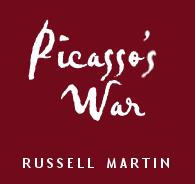|
|
Introduction
The story of Guernica is one in which Picasso's masterpiece readily proves that art matters enormously in our individual and collective lives. Far more than decoration, great art of every kind painting, sculpture, literature, music, dance painting, sculpture, literature, music, dance examines, reflects on, and makes sense of events that we otherwise struggle to understand. Art gives us a common language and common perspective with which to grieve and to celebrate, to express outrage and to offer hope. examines, reflects on, and makes sense of events that we otherwise struggle to understand. Art gives us a common language and common perspective with which to grieve and to celebrate, to express outrage and to offer hope.
Guernica has become so important worldwide because it has so perfectly suited its times. It is monumental without being classically "monumental," depicting as it does a vital political event from the microcosmic perspective of its victims rather than from the macrocosm of historical "meaning." Guernica became great, in the view of critic Hilton Kramer, because "a great painter placed his talents at the service of a great political cause, and thus for one splendid moment of history, at least for one splendid moment of history, at least the treacherous gap separating the hermetic concerns of modernist art from the larger and more compelling interests of society was triumphantly bridged." It is that process of bridging the treacherous gap separating the hermetic concerns of modernist art from the larger and more compelling interests of society was triumphantly bridged." It is that process of bridging the linking of human tragedy to the alchemy of art the linking of human tragedy to the alchemy of art that is the soul of this story. It is a story that affirms that it is art that best enables us to ennoble our lives, and that only art can meaningfully fuse both doom and beauty. that is the soul of this story. It is a story that affirms that it is art that best enables us to ennoble our lives, and that only art can meaningfully fuse both doom and beauty.
|
|

 |
Discussion Questions:
- The author contends that in many ways, World War II began with the Spanish Civil War. What events led him to that conclusion?
- Why was the town of Gernika targeted for destruction? From a military perspective, was there logic in that decision?
- When countries and societies choose to wage war against each other, should civilians rightfully and morally be spared? If so, why?
- Many other atrocities had occurred in Spain by the time Gernika was bombed. What was it about the attack that caused such immediate outrage around the world?
- Other than the painting's title, nothing in it literally references the aerial bombardment of the Basque town. Why didn't Picasso specifically document the destruction of Gernika?
- What is it about the painting that gives it such visual power?
- Picasso was aware as he began to paint that the huge mural would hang in the Spanish Pavilion of the Paris world's fair. Did that awareness likely influence his artistic decisions?
- What was it about the 1937 world's fair that made it so charged with political rhetoric despite its nominal focus on modern technology?
- Did Guernica succeed or fail in its initial attempt to draw attention to the plight Republican Spain?
- Picasso said that all paintings necessarily are "instruments of war." What did he mean?
- What was it about Guernica that initially captivated Picasso's fellow contemporary artists?
- Many artists in the 1940s and 1950s claimed that Guernica greatly influenced their own art. What elements of the painting were so influential?
- Picasso was an enormously complex person
 god and demon in equal measure, it often appeared. Are great artists necessarily so multifaceted and so often difficult? god and demon in equal measure, it often appeared. Are great artists necessarily so multifaceted and so often difficult?
- Why was it of such importance to Picasso that Guernica reside in Spain one day?
- Why were so many intent for so long in bringing Guernica to Spain? What did they hope its arrival would accomplish?
- THE WAR HAS ENDED, was the headline in Spain's leading newspaper the day after Guernica's arrival in Madrid, yet the fighting had ceased 42 years before. What was it about the painting's presence in Spain that at least symbolically closed the war?
- Why were so many Basques so bitter about the painting's residence in Madrid? Was their anger justified?
- Should Guernica ever be moved again, and where should it rightfully reside?
- Early in the twenty-first century, is Guernica famous because it is a great painting, or is it widely considered a great painting simply because it is so famous?
- Did this single painting truly change the shape of the twentieth century?
|
| |


|
|






